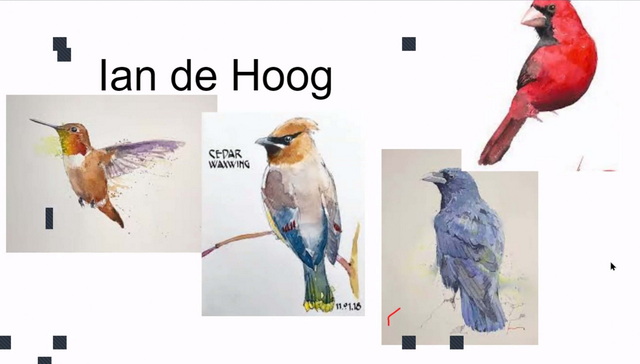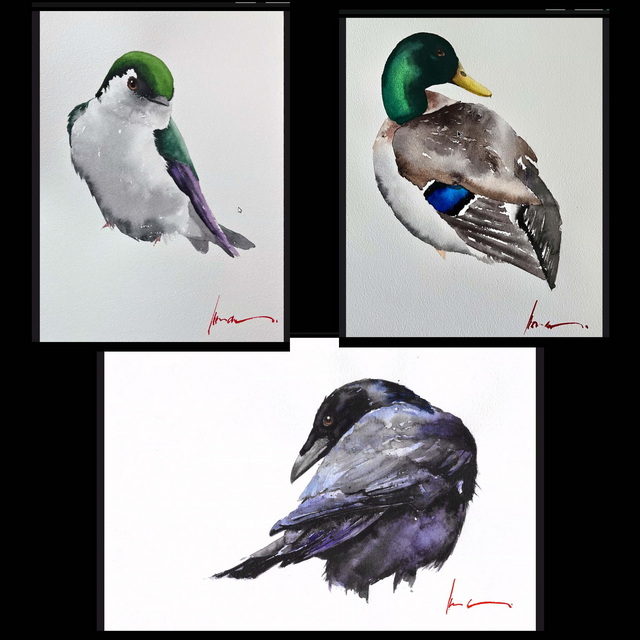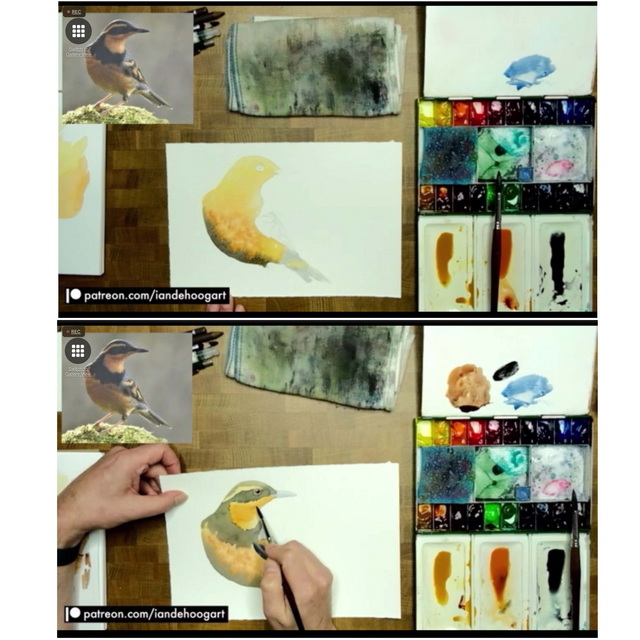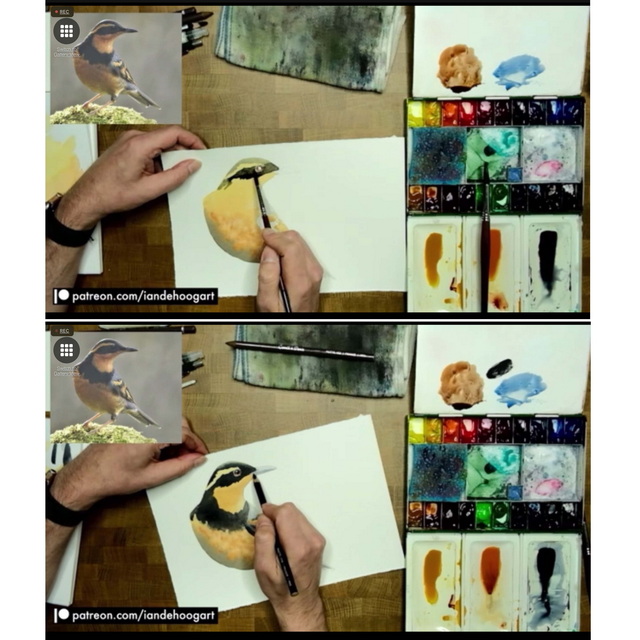
Ian de Hoog – Friday Night Guest – October 13, 2023
(Submitted by Sally Williams)
Ian De Hoog is a Canadian artist and teacher. From a young age, Ian drew and painted birds, but originally planned on a career in architecture. Around 3rd year of university though, he realized he loved painting and changed his career path. Other than a few workshops, Ian is a self-taught painter.
The presentation showed Ian’s progression as a painter, and he feels his work bridges art and illustration. Pausing on certain paintings (a crow being a good example) Ian pointed out the looseness he aims for (using wet-on-wet, dry brush and layering to give the illusion of feathers), stressing that he picks which part of the bird to focus on (the face, or a desired final, visual resting spot) while avoiding the route of “scientific illustrator”. Working mostly from photo reference he will sketch plein air, taking the moment captured back to the studio (his photography skills help with composition). As long as his photos capture an interesting shape Ian enjoys painting all bird species. Anyone who enjoys bird watching will understand that painting birds plein air would prove challenging!
Ian’s demonstration subject was a Varied Thrush and he explained his order of working, preferred palette (mixing certain colours in readiness) and how he would approach the subject (a search for harmony and where he’ll focus detail). He began with a light wash then moved to middle values and finally darker details, checking shadow values and examining hues (light or dark? Warm or cool?). He rarely uses black paint (mostly saved for the eyes/pupils).
What initially appeared to be a heavy application of a dark neutral gave way to a softness as the paint was absorbed into the paper as it dried (a result that is familiar to those with watercolour experience). Knowing when to stop is key to achieving the desired luminosity and avoiding muddiness. Ian has also been exploring iridescent paints (e.g. the mallard duck and tree swallow).
Questions included his paint brand preference (Daniel Smith) and a 2B lead pencil for the initial sketch. Favourite brushes are a small round brush (#2, #8 & #12) round brushes and a fan brush (1” wide) for roughing up edges (long handled fan brush helps keep it spontaneous and loose). White gouache (titanium white) is also used sparingly for fine, wispy feathers. White markers as well for the eye (pupil). His preferred paper is cold press and he rarely uses watercolour mediums (like Ox Gall liquid or Gum Arabic). Dry brushwork leaves part of the white paper exposed vs relying on masking fluid (e.g. the wings). There’s a spontaneity with this brushwork. A paper blending “stump” is also used frequently to soften edges here and there.
The demonstration was a great introduction to watercolour and many attendees who usually avoid this medium are now intrigued to give it a try! Ian’s website, teaching schedule, contact information and socials can be found here:
https://www.iandehoog.com/about-2/
https://www.iandehoog.com/teaching/workshops/







